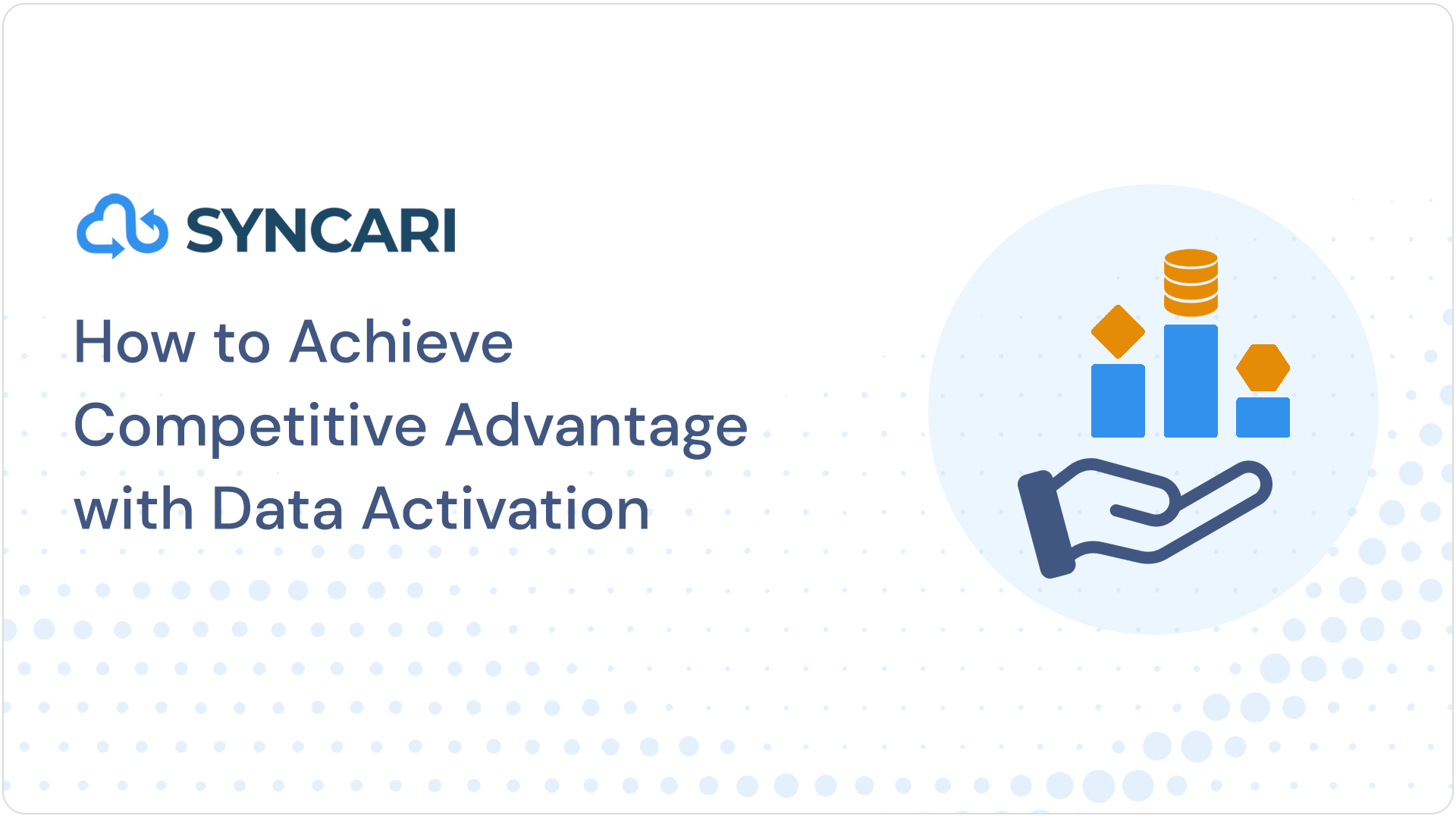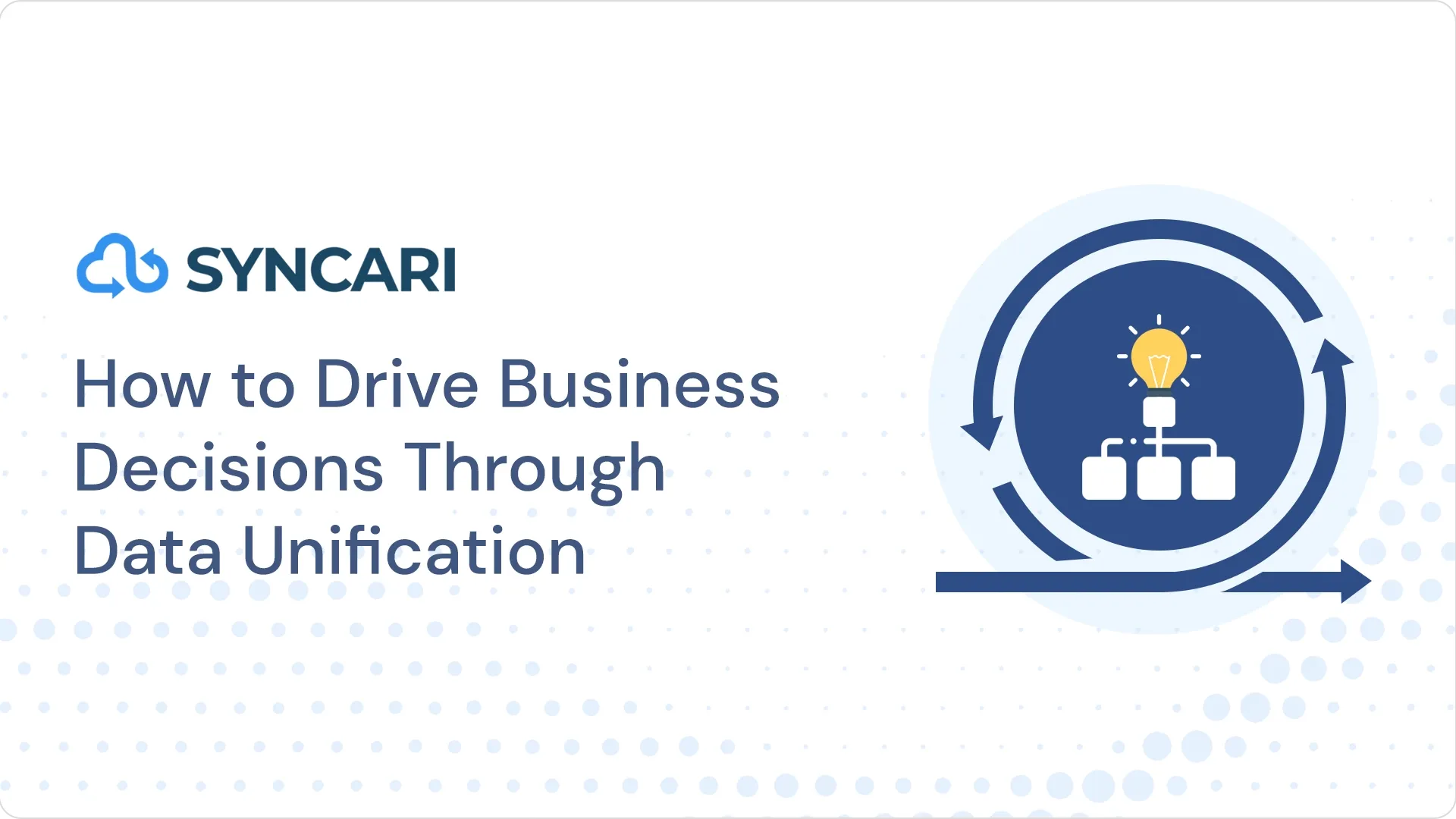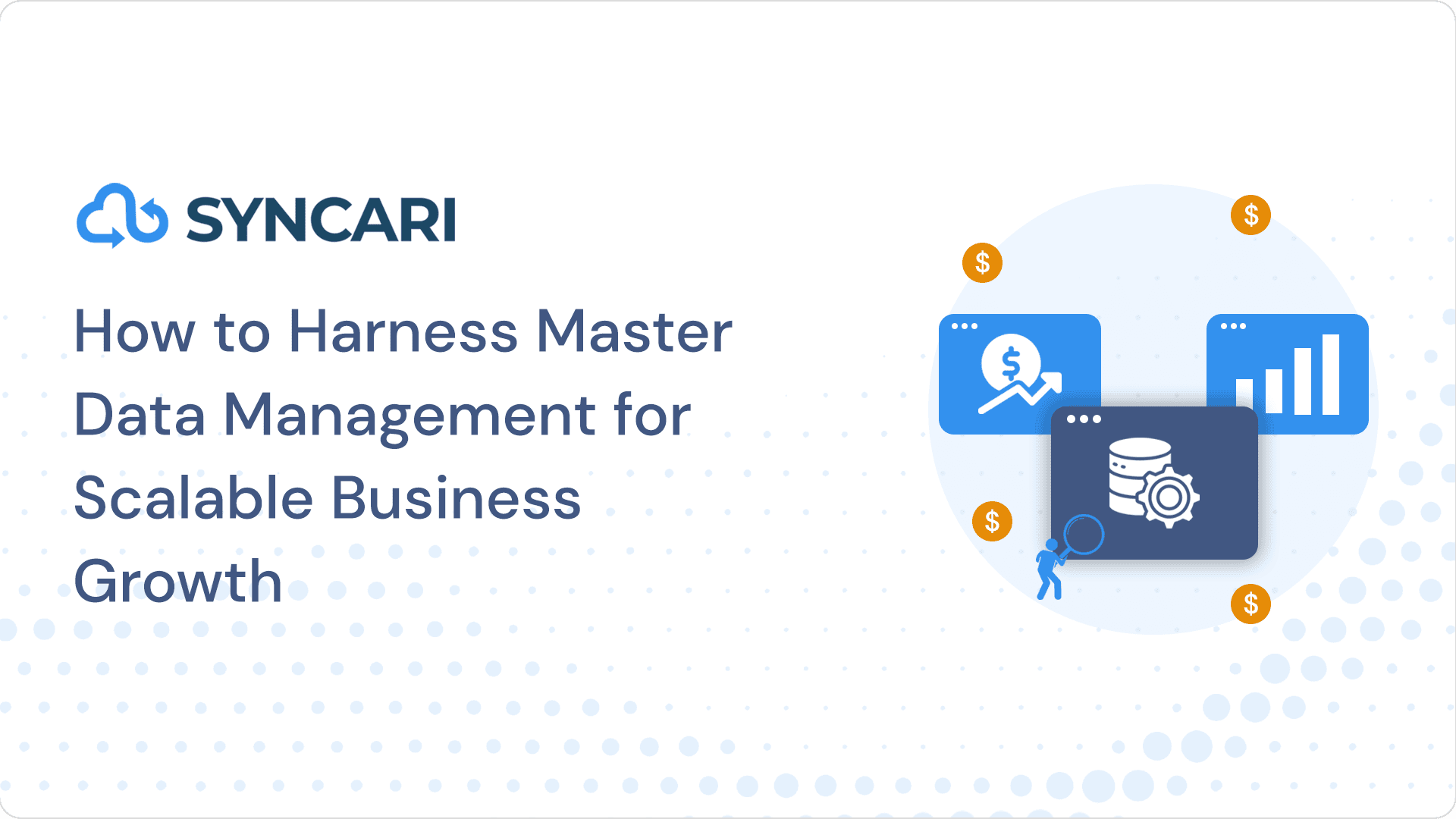Customer master data management (CMDM) has emerged as a critical discipline for organizations seeking to gain a competitive edge and drive meaningful customer experiences. As businesses collect an ever-increasing amount of customer data from multiple sources, the need to effectively manage and harness this information becomes paramount. This is where customer master data management plays a pivotal role.
Customer master data management involves the processes, tools, and strategies employed to ensure that customer data is accurate, complete, and consistent across the organization. It serves as the foundation for maintaining a well-managed customer database—a single source of truth that provides a holistic and unified view of customers.
In this blog, we will delve into the fundamental concepts of customer master data management and highlight the significance of a well-managed customer database. We will explore various strategies and best practices that organizations can adopt to maximize the value of their customer master data model.
From data governance and data quality management to data integration and enrichment, we will provide insights and practical tips to help organizations establish a strong customer master data management foundation.
What is Customer Master Data Management (CMDM)?
Customer Master Data Management (CMDM) is an approach that consolidates and maintains accurate, reliable customer data in a central repository. It creates a unified view of each customer by gathering data from various systems and touchpoints, enabling informed decisions and personalized experiences. Customer master data management supports customer-centric strategies, providing insights for targeted marketing, product offerings, and customer segmentation.
Data quality management is crucial, achieved through cleansing, deduplication, and enrichment to minimize errors and improve the customer journey. Additionally, customer master data management aids in regulatory compliance, implementing data governance, consent management, and data security measures for customer privacy and protection.
Essentials for CMDM Success
Data Governance
Data governance forms the backbone of successful CMDM implementations. It encompasses the processes, policies, and guidelines that ensure the proper management, accessibility, and security of customer data. Here’s why data governance is critical for CMDM:
Significance of Data Governance in CMDM
Effective data governance consistently and efficiently establishes a framework for customer data management. It ensures that data is up to date, accurate, reliable, and accessible to relevant stakeholders across the organization.
Without proper data governance, CMDM efforts can result in inconsistent data, data silos, and compromised data integrity.
Defining Data Ownership, Roles, and Responsibilities
Clear data ownership and well-defined roles are crucial in CMDM. Assigning responsibility for data quality, maintenance, and updates ensures accountability and avoids data duplication or discrepancies.
By clearly defining roles and responsibilities, organizations can streamline data management processes and minimize data-related bottlenecks.
Establishing Data Governance Policies, Standards, and Processes
Data governance policies and standards provide guidelines for handling customer data consistently. These policies define data formats, naming conventions, and data entry guidelines, ensuring uniformity and standardization.
Organizations should establish robust processes for data collection, data entry, data updates, and data retirement to maintain data consistency and integrity.
Data Quality Management
High-quality customer data management is essential for CMDM success. Poor data quality can have significant impacts on business operations and customer relationships. Here’s why data quality management is vital in CMDM:
Impact of Poor Data Quality
Inaccurate (e.g. duplicate data) or incomplete customer data can lead to misguided business decisions, flawed data data analytics, and compromised customer experiences. It can result in wasted resources, missed opportunities, and damaged customer relationships.
Data quality issues can affect marketing campaigns, customer segmentation, and overall operational efficiency.
Strategies for Improving Data Quality
To improve data quality, organizations can employ various strategies within CMDM. Data cleansing techniques help identify and correct inaccuracies, inconsistencies, duplicate data, and outdated information in the customer database.
Data enrichment involves enhancing customer data by appending additional information, such as demographic or behavioral data. Data deduplication eliminates redundant or duplicate records, ensuring a single, accurate view of each customer.
Role of Data Validation Rules, Monitoring, and Stewardship
Data validation rules play a crucial role in CMDM by enforcing data quality standards and ensuring data consistency during data entry or data integration processes. Implementing regular data monitoring procedures helps identify and address data quality issues promptly.
Data stewardship involves assigning dedicated individuals or teams responsible for maintaining data quality, resolving data-related issues, and enforcing data governance policies.
By prioritizing data governance and data quality management, organizations can establish a strong foundation for CMDM success. Clear data ownership, defined roles, and data governance policies helps ensure consistent and accurate data, while strategies like data cleansing and enrichment enhance data quality.
With robust data governance and data quality management practices in place, organizations can maximize the value of their customer data, drive accurate insights, and build strong customer relationships.
Strategies for Maximizing the Value of Customer Data
Data Integration and Consolidation
In the age of abundant data, organizations often struggle with integrating and consolidating customer information from disparate data systems. However, effective data integration and consolidation are crucial for deriving maximum value from customer data. Here’s why it matters and how it can be achieved:
Challenges in Integrating and Consolidating Customer Data
Organizations often encounter obstacles when integrating and consolidating customer data. Data silos, incompatible formats, and varying structures across multiple systems present challenges that hinder the creation of a unified customer view, resulting in fragmented insights and missed opportunities.
Inconsistent and unreliable data arises from the lack of data governance and data quality management processes, making it arduous to establish a cohesive customer perspective.
Limited resources and budget constraints further impede the implementation of effective data integration and consolidation strategies, as organizations struggle to acquire necessary tools and technologies.
Furthermore, a dearth of technical expertise and skills within the organization obstructs successful execution, as it requires proficiency in data mapping, transformation, and synchronization techniques.
Overcoming these challenges is imperative for organizations to fully leverage the value of their customer data.
Techniques and Tools for Seamless Data Integration
Data integration relies on crucial techniques such as data mapping, data transformation, and data synchronization to effectively merge customer data. Data mapping ensures alignment of data from various sources to a unified structure, considering data quality, formats, and structures.
Data transformation facilitates data normalization and standardization, enabling smooth integration. Data synchronization ensures ongoing consistency and currency of data across multiple systems, enhancing data reliability and accuracy during the integration process.
Benefits of a Unified View of Customer Data
Having a unified view of customer data provides organizations with a comprehensive understanding of their customers. This enables personalized marketing campaigns, improved customer segmentation, and cross-functional analytics.
A unified up to date view allows organizations to identify valuable patterns, trends, and correlations within the data, unlocking valuable insights for better decision-making and enhanced customer journey.
Data Enrichment and Augmentation
Data enrichment plays a crucial role in enhancing customer insights and expanding the depth of customer data. By augmenting existing customer data with additional information, organizations can gain a more comprehensive understanding of their customers. Here’s how data enrichment contributes to maximizing the value of customer data:
Enhancing Customer Insights through Data Enrichment
Data enrichment encompasses the process of augmenting existing customer records with supplementary data. This can encompass demographic information like age and gender, firmographic details such as company size and industry, or behavioral data like purchase history and browsing patterns.
By enriching customer data, organizations gain deeper insights into customer preferences, interests, and needs. Data enrichment techniques can involve various methods, including:
- Appending additional data from third-party sources to enhance customer profiles.
- Utilizing quantum machine learning solutions to infer additional data based on existing information, uncovering hidden insights.
- Combining data from multiple sources to create a more comprehensive and holistic view of the customer, providing a deeper understanding of their behavior and preferences.
Various Data Enrichment Techniques
Organizations can leverage various data enrichment techniques to augment customer data. These techniques involve leveraging third-party data sources, data appending services, or data partnerships.
By enriching customer data, organizations can create more detailed customer profiles, enabling more targeted and personalized interactions.
Impact of Enriched Customer Data on Profiling, Targeting, and Engagement
Enriched customer data empowers organizations to refine customer profiling, enabling more accurate segmentation and targeting.
By understanding customer characteristics, preferences, and behaviors in greater detail, organizations can tailor their marketing messages, offers, and experiences to individual customers.
This enhances customer engagement, strengthens brand loyalty, and drives better business outcomes.
Data Privacy and Security
As organizations collect and manage customer data, ensuring data privacy and security becomes paramount. Organizations must adopt best practices to protect customer data and comply with data privacy regulations. Here’s why data privacy and security are crucial in CMDM:
Importance of Data Privacy and Security in CMDM
Safeguarding customer data instills trust, protects sensitive information, and ensures compliance with regulations. Organizations must prioritize data privacy and security to maintain customer confidence, prevent data breaches, and mitigate risks associated with data misuse or unauthorized access.
Best Practices for Data Privacy and Security
To safeguard customer data, organizations must implement strong data privacy policies, enforce data access controls, and employ data encryption measures. Compliance with data privacy regulations like GDPR and CCPA necessitates obtaining customer consent, offering opt-out choices, and employing data anonymization techniques when appropriate. Consent management tools assist in effectively managing customer preferences and consent.
However, it is crucial to acknowledge that these practices represent only a portion of comprehensive data privacy and security measures. Organizations should also prioritize additional factors such as:
- Educating employees on data privacy and security protocols.
- Implementing security awareness programs to cultivate a culture of data protection throughout the organization.
- Conducting regular security audits to identify vulnerabilities, address potential threats, and ensure ongoing compliance with privacy and security standards.
By implementing strong data integration and consolidation practices, leveraging data enrichment techniques, and prioritizing data privacy and security, organizations can maximize the value of their customer data.
These strategies enable a holistic view of customers, improve targeting and engagement of marketing efforts, and build trust with customers. By harnessing the power of customer data responsibly, organizations can drive business growth and deliver exceptional customer experiences.
How Syncari Can Support CMDM
Robust Data Governance and Data Quality Management
With Syncari, organizations can leverage robust data governance features to establish a framework for managing customer data consistently and efficiently. Data governance forms the backbone of successful CMDM implementations, ensuring that critical data is up to date, accurate, reliable, and accessible to relevant stakeholders.
Syncari enables clear data ownership, defines roles and responsibilities, and establishes data governance policies, standards, and processes. By streamlining data management processes and minimizing data-related bottlenecks, organizations can maintain data consistency and integrity.
Seamless Data Integration and Consolidation
Another critical aspect of CMDM that Syncari addresses is data quality management. Maintaining high-quality customer data management is essential for making reliable business decisions and building trust with customers as well as internally with sales and marketing teams for example.
Syncari offers data cleansing, deduplication, validation, and enrichment techniques to enhance data accuracy. By ensuring accurate, complete, and consistent customer data, organizations can minimize errors, reduce operational inefficiencies, and improve customer satisfaction.
Syncari also tackles the challenges of integrating and consolidating customer data from disparate sources. Effective data integration and consolidation are essential for deriving maximum value from customer data management. Syncari’s data mapping, transformation, and synchronization capabilities allow organizations to align, normalize, and standardize data across systems seamlessly.
By creating a unified view of customer data, organizations gain a comprehensive understanding of their customers, enabling personalized marketing campaigns, enterprise resource planning, improved customer segmentation, and cross-functional data analytics.
Data Enrichment and Privacy Protection
Furthermore, Syncari enables data enrichment and augmentation, enhancing customer insights and expanding the depth of customer data. With data enrichment techniques leveraging third-party data sources, data appending services, and data partnerships, organizations can create more detailed customer profiles and deliver targeted and personalized interactions.
By understanding customer characteristics, preferences, and behaviors in greater detail, organizations can refine customer profiling, strengthen brand loyalty, and drive better business outcomes.
In terms of the data privacy landscape, organizations must prioritize data privacy and security in CMDM. Syncari helps organizations meet this challenge by providing robust data privacy and security features. With data privacy policies, access controls, encryption measures, and compliance with regulations such as GDPR and CCPA, Syncari ensures that customer data is protected, instilling trust and preventing data breaches.
Syncari is a powerful platform that empowers organizations to maximize the value of their customer data. By implementing strong data governance, data quality management, data integration and consolidation, data enrichment, and data privacy and security practices, organizations can unlock the full potential of their customer data.
Syncari’s comprehensive CMDM capabilities enable a holistic view of customers, improve targeting and engagement, and drive business growth while delivering exceptional customer experiences.
In the rapidly evolving world of data management, Syncari stands out as a reliable and innovative solution for organizations seeking to harness the power of their customer data. With Syncari, organizations can confidently embark on their CMDM journey, confident in their ability to build a well-managed customer database and drive meaningful customer experiences.
Conclusion
Syncari offers a comprehensive CMDM solution to unlock the full potential of customer data. Its advanced platform streamlines data governance, integration, and privacy, enabling organizations to consolidate and maintain reliable customer data.
With Syncari, businesses gain an up to date unified view of their customers, leading to informed decisions and exceptional customer experiences. Seamlessly navigating CMDM complexities, Syncari drives business growth in today’s data-driven landscape.


